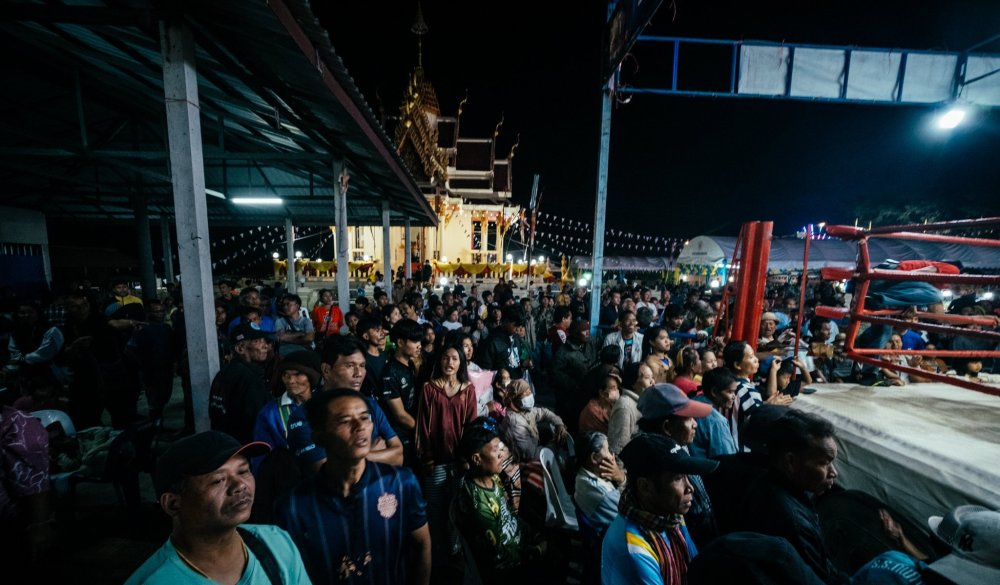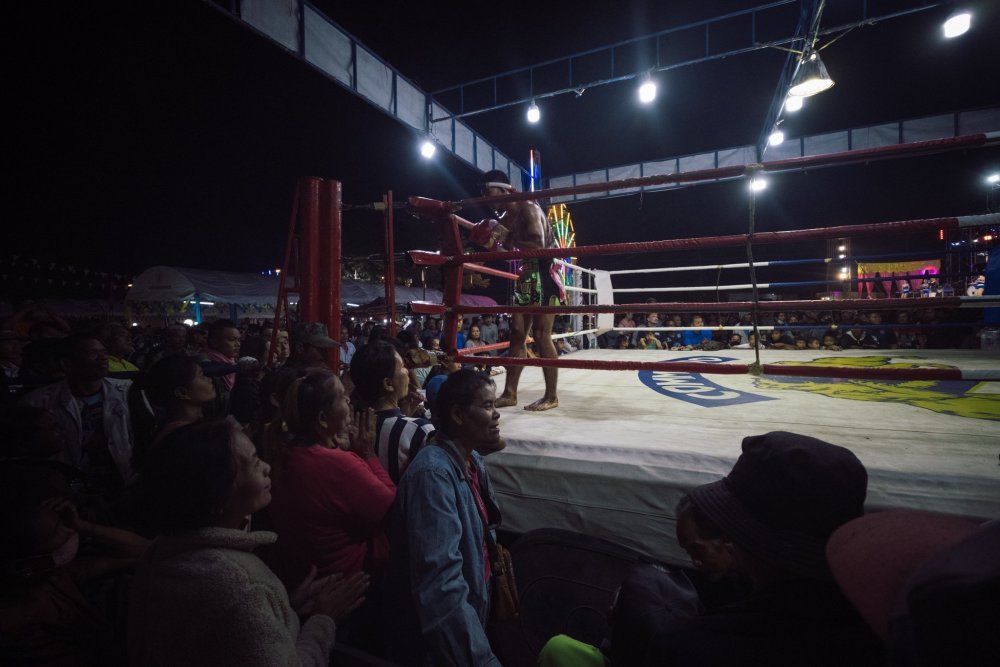Leaderboard
Popular Content
Showing content with the highest reputation on 02/19/2024 in all areas
-
Just very briefly I want to take up one of the most interesting aspects of the fighting art of Thailand's traditional Muay Thai, an aspect that really cues for me how I watch fights and weigh the skills of fighters. Managing distance. Many people watch "strikes" and look for "points", but there is an under-fabric to strikes, a kind of landscape of them, no less than how a topography will influence how a battle is fought between armies. Even the most practiced strikes rise and fall to opportunity, and in Muay Thai a significant determination of opportunity is distance. Above is a quick edit of Sylvie's last fight up in Buriram, bringing out all the significant moments of engagement, telling the story in about a minute. (The full fight should be up in a few weeks with Sylvie's commentary, as usual.) I'm going to start with Entertainment Muay Thai as presenting an negative can often be the best way to bring out a positive. Entertainment Muay Thai (and there are many versions of it, so we have to be very broad here), is largely principled by eliminating the importance of distance. What is sought, again being very broad, is a more or less continuous trading in the pocket. The quest is for an easy to follow, by the casual eye, "action". Everything is about the distance of the pocket. Setting up outside of the pocket can be regarded as anti-action (so, if you do, you should regularly charge into the pocket...and trade). And fighting through the pocket, to clinch range, is also devalued by very quick clinch breaks, scoring biases (changing traditional aesthetics). Clinch, which historically is featured in some of the most technical fighting of the sport, in Entertainment Muay Thai is more and more understood as a stall of the main goal. Pocket trading. Much of the art of Muay Thai is actually organized around all those distances that border "the pocket", controlling distance through length, or through grappling. In this fight Sylvie is giving up between 8-10 kgs (perhaps more than 20% of her body weight). Now, imagine it being fought under Entertainment aesthetics. What would it be if she just stood in the pocket, bit down, and just traded over and over with Phetnamwan? Would there be any point of such a fight? Yet, as the Golden Age legend Hippy Singmanee once said when criticizing hyper-aggressive, pocket-trading Entertainment Muay Thai, "Muay Thai is the art where small can beat big." Hippy was one of the most renown undersized fighters of the Golden Era. He knows of what he speaks. This fight, in the broad brush, illustrates some of that. More and more we've come to realize that as traditional Muay Thai evaporates slowly from the urban stadia, the only traditional Muay Thai still being regularly fought is in the provinces of the country. It is there that fights are scored in keeping with the art, and fighters retain the all around, multi-distance skills that make that art happen. Clinch is allowed to unfold. Narrative fight arcs are told as principle to scoring. Ryan, a knowledgeable commenter on Twitter and a very good writer on the sport, right away noticed how the ref let clinch flow. You can see some of our discussion there. I recall a conversation I overheard when attending the funeral of the legend Namkabuan in Nongki. It was the passing of one of the greatest who ever fought. During the day-before cremation a casual conversation arose between other legends of the sport, and very experienced news reporters, people who had been a part of it for decades. One of them insisted, Muay Thai no longer existed in Thailand. Others knowingly nodded their heads. But a Muay Siam reporter objected. "No...it still lives in the provinces." And the others agreed. It still was there. We in the English speaking world tend to think the substance of something is what has been presented to us. The Muay Thai of Bangkok is the real Muay Thai of Thailand because that is what we see...and, historically, many decades ago, it did represent the highest skills of the country. But what largely remains unseen is that more and more of the sport is being designed for our eyes. It is less and less for Thais, and more and more for "us", so we can become quite disconnected from what is real and authentic in a cultural, and even efficacy sense. There rhythms and values of provincial Muay Thai, as it is fought, coached and reffed, are part of the rich authenticity of the sport which falls into the shadows when we just look at what is being shown to "us". This fight, how it is fought, shows "the art of where small can beat big", and it shows why. It's through the control of distance. If you are small you just cannot stand at range. You either have to explore the bubble outside of the pocket, too far, or at its edges, and fight your way in to score...or, you collapse the pocket, smother the strikes, and possess the skill to control a much larger bodied opponent. Clinch, historically, is kryptonite to the striker. Muay Maat vs Muay Khao battles are legendary in the sport. Classic. Who is going to impose the distance which is best for them? It's a battle of distances. And, for this reason, Muay Maat fighters of the past were not experts in trading in the pocket. They were experts in managing clinch fighters, or even high level clinch fighters themselves...and they were experts at hunting down evasive femeu counterfighters as well. Muay Maat fighters were strong. They had to have so many tools in their tool box. In versions of the sport where both fighters are forced to "stand and bang" repeatedly, we have been taken quite far from the glories of Thailand's Muay Thai fighters, and that is because Muay Thai is an art of distance control. This goes to a deeper point about the sport. It isn't really a "sport" in the International, rationalist idea of a sport. Muay Thai is culture. It is Thai culture. Thousands and thousands of fights occur on temple grounds, far from Western eyes. It has grown up within the culture, but also expressive of that culture. And it is a culture unto itself. The more we try to extract from this rich fabric some kind of abstract "rule set" and "collection of techniques" that can be used in other cultures, expressing their values, favoring their fighters, the more we lose the complex art of what Muay Thai is...and in the bigger sense move away from the value it has to the entire world. It's value is that it has a very highly developed perspective on distance management and on aggression. It has lessons upon lessons to teach in techniques of control and fight winning, woven into the DNA of its traditional aesthetics. And these techniques embody the values of the culture. It's all of one cloth. Sylvie has chosen the path less traveled. She's fought like no other Westerner in history (a record 271 times as a pro), and she has devoted herself to the lessor style, the art of Muay Khao and clinch fighting. There are very, very few women, even Thai women, who have seriously developed this branch of the art in the way that she has. And she's done it as a 100 lb fighter, taking on great size disparities as she fights. Because Muay Thai is "the art where small can beat big" there is a long tradition of great, dominant fighters fighting top fighters well above their weight, and developing their in style the capacity to beat them. Fighting up is Muay Thai. Sylvie's entire quest has been to value what may not even be commercially valued at this time, the aspects of the art which point to its greater meaning & capacity. The narrative of scoring, the control of distance, the management of striking through clinch, in the heritage of what it has been. I'm not saying that this is the only way to fight, or that Entertainment Muay Thai has no value for the art and sport. It's not, and it does. But, we should also be mindful of the completeness and complexity of Muay Thai, and the ways that those qualities can be put at risk, as the desire to internationalize it and foreign values become more and more part of its purpose. If we love what we discover when we come to Thailand, we should fight to preserve and embrace the roots of Muay Thai, and the honored aspects of the culture/s which produced it. photos: Khaendong, Buriram, Thailand (temple grounds)1 point
Footer title
This content can be configured within your theme settings in your ACP. You can add any HTML including images, paragraphs and lists.
Footer title
This content can be configured within your theme settings in your ACP. You can add any HTML including images, paragraphs and lists.
Footer title
This content can be configured within your theme settings in your ACP. You can add any HTML including images, paragraphs and lists.

